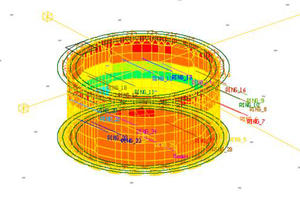European standardization as an opportunity for concrete reservoirs
Since the spring of 2013, manufacturers of small concrete wastewater treatment plants from all parts of Germany have joined forces to form a joint working group aiming to offer a platform for lobby work and uniform representation of the manufacturers throughout the industry. As a result, it was possible for important decision-making committees to be re-filled and provided with technical input. The improved public image achieved by designing and publishing flyers and a code of practice entitled “Small wastewater treatment plants made of concrete – design, installation and operation” (publication scheduled for spring 2018) is also recognized and appreciated throughout Germany. It became clear right in the first meetings of the working group that verifications better tailored to real-life conditions would be desirable also for the design or verification of structural stability; an amendment of or consideration in existing German and European standards could, however, be achieved neither with the Standards Committee Building and Civil Engineering (Normenausschuss Bauwesen) nor with the Standards Committee Water Practice (Normenausschuss Wasserwesen) of the German Institute for Standardization (Deutsches Institut für Normung e.V. = DIN).
It was therefore particularly encouraging that the consultant from the European Committee for Standardization responsible for the EN 12566 series of standards of Working Group 41 has recommended to establish binding regulations for the structural stability of small wastewater treatment plants within the framework of the European standardization process. The manufacturers will make use of this opportunity as reservoirs made of concrete are known to be distinctive for their high structural capacity and structural stability also in trafficable areas. Concrete and reinforced concrete can be designed by means of conventional methods or, alternatively, the finite element method (see Fig.), which readily permits a normative regulation in line with the existing Eurocodes.





